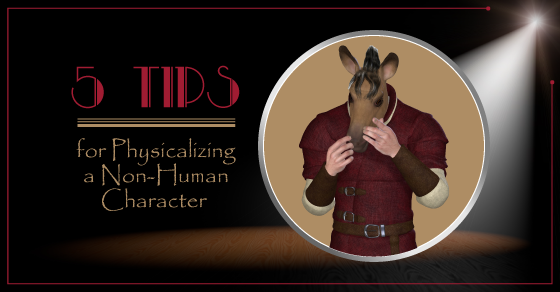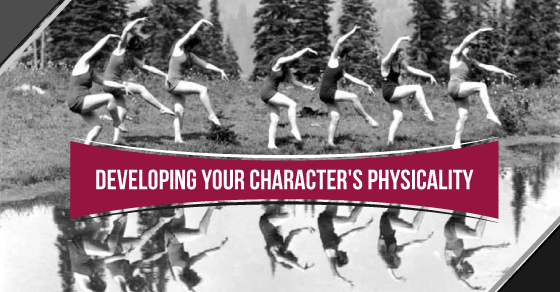5 Tips for Physicalizing a Nonhuman Character
Are you playing Puck in A Midsummer Night’s Dream? One of the seven deadly sins? A banana in an improv scene? A god in a Greek myth? The Lint Roller in The Absolutely Insidious and Utterly Terrifying Truth About Cat Hair?
One of the best aspects of theatre performance is that if the actors on stage believe what and who they are presenting, so will the audience. Audience members will suspend their disbelief when they see a talking cat or a piece of baloney come to life on stage. Theatre is the perfect playground for nonhuman characters.
Student actors find it challenging to depict nonhuman characters because of the physical component. It’s hard for student actors to get out of their decidedly human bodies. As a result, nonhuman characters often end up looking human.
Here are the top 5 tips for playing nonhuman characters:
1. Find a different level
2. Find a different shape
3. Get a little uncomfortable
4. Change your natural rhythm of movement
5. Don’t neglect the character’s background
1. Find a different level
Student actors often occupy space at a medium level. They stand and move on stage the way they do in their regular life. They don’t think about incorporating a variety of levels into their character building. A different level will help them to visually identify a nonhuman character. Ask students how their character occupies space and how it’s different from their own choices. Encourage students to explore levels outside the day to day. Have students kneel or crouch down for a medium low level, or get down flat on the floor and try to move without using arms and legs. Have them run on their tiptoes or stand on the furniture to explore a high space. Push them out of the norm and encourage them to make choices that are out of their comfort zone.
2. Find a different shape
Students’ bodies follow pretty straight lines (albeit with a bit of a standard slouch). They keep their limbs close to their body and their legs and arms stay straight. They walk one foot after the other in a line. Get students thinking about the possibilities of different body shapes. Have them bend elbows and knees. Raise one shoulder up to their ears. What is the identifying shape for this nonhuman character? Can you you make your body a circle? A triangle? Once students have defined their character’s body shape, ask how they can incorporate shapes into their movement. Does this character roll? How can you roll with your gait? If this character’s defining shape is a triangle with the legs spread out wide, how does that affect your walk?
3. Get a little uncomfortable
Standing and moving in a different shape at a different level by its nature is going to be uncomfortable for students. They’re going to want to revert back to their normal ways. Practice holding an uncomfortable stance. Have students discuss how it feels. The goal is not to shy away from new body shapes but to learn how to embrace discomfort. It could be a series of stretches afterward. It could be setting a 10 second limit for the hold and increasing the time over subsequent classes. It could be defining two poses for the character and creating a transition between the poses that releases any tension.
4. Change your natural rhythm of movement
There are so many options when creating a movement rhythm for a character. You can speed up or slow down. You can combine the two in a quick, quick, slow pattern. You can create imbalance in your rhythm by walking on the inside of the left foot and the outside of the right foot. You can drag the left leg behind in a limp. Before asking students to define a rhythm of movement for their nonhuman character, have them practice possible ways of moving. Start students moving at a 1 (where 1 is slower than a turtle and 10 is all out running) and play with speed. Have students walk on their toes, their heels, and all points in between. Get them to walk with their feet close together and far apart. Encourage students to move as differently than their natural rhythm as possible.
5. Don’t neglect character background
Defining the physicality for a nonhuman character doesn’t stop with the body. Character details can influence physicality. Sometimes students assume they don’t have to come up with the same details as they would with a human character. The answers certainly won’t be the same as they would be for a human character. Who would make up the family of one of the seven deadly sins? What would Greed’s pet peeve be? What would Sloth’s favourite food be? Identifying character details gives an actor more to work with and that’s essential for a nonhuman character. You don’t want to present a novelty piece. A nonhuman character needs to be as three dimensional as any other character. Once students come up with these details, ask “How can these details be incorporated into your character’s physicality?”
The more they practice different physical choices, the easier it will be to create a nonhuman character.



